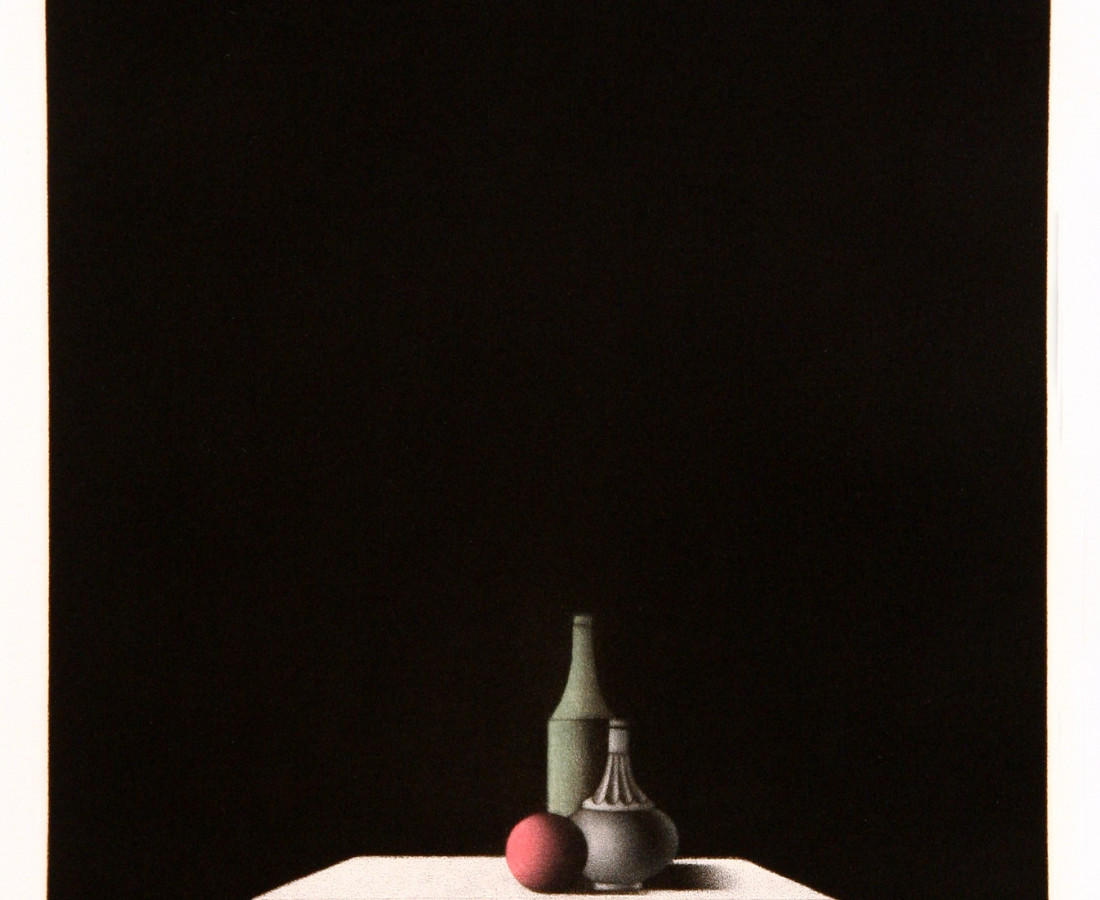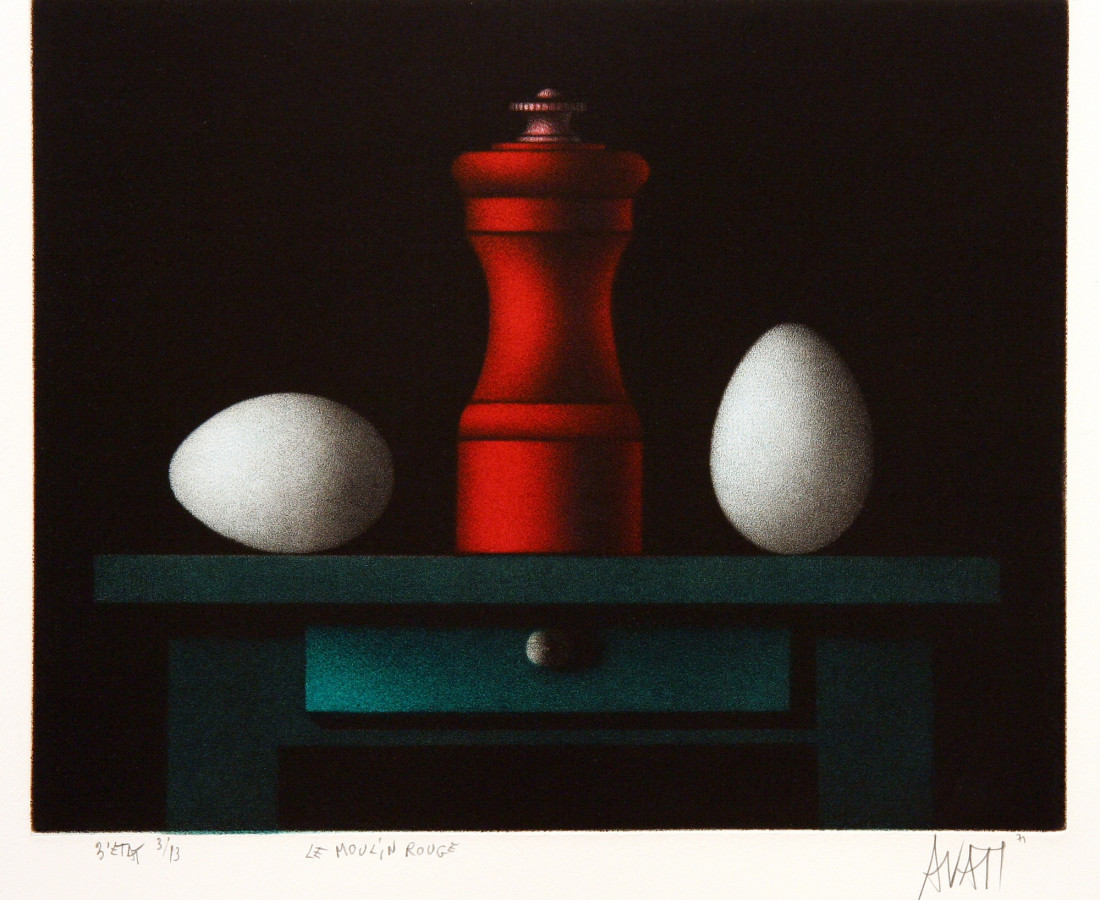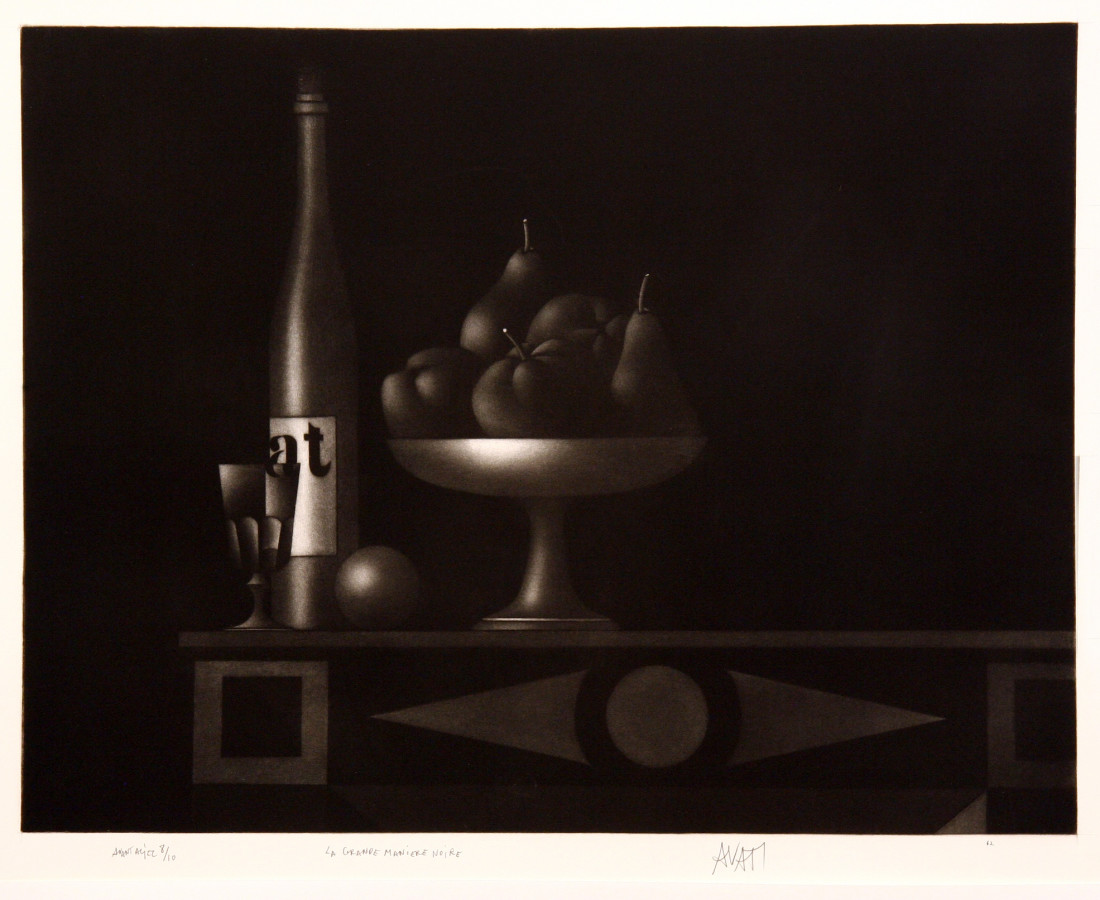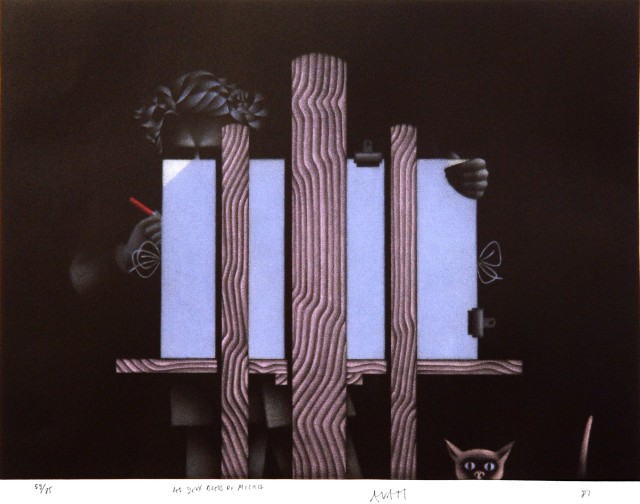Mario Avati (1921-2009) is together with Kyoshi Hasegawa and Yozo Hamaguchi one of the most significant practitioners of our times of the art of mezzotint (manière noire).
After having studied at the École nationale des arts décoratifs in Nice and at the École nationale supérieure des Beaux-arts in Paris, Avati started with etching and aquatint, but turned in 1957 to the difficult mezzotint technique, thereby contributing to its revival. His mastery of mezzotint is mainly expressed in his remarkable still lifes, everyday items such as fruits, eggs, flowers and musical instruments. These objects with firm contours bask in the splendor of their own light, or in a mysterious chiaroscuro.
More than thirty exhibitions in Europe, the U.S.A. and Japan, five films of his work, as well as book illustrations including Baudelaire, Lewis Carroll and the Bible testify to his international reputation.
His works are found in many museums around the world. In France he is represented in some thirty institutions including the Chalcographie of the Louvre Museum, and abroad at the Art Institute of Chicago, the Museum of Modern Art and the Metropolitan Museum of Art in New York, the National Gallery in Washington, the Victoria and Albert Museum, Gabinetto delle Stampe degli Uffizi in Florence, the National Library of Madrid, the Tokyo Museum, the Museum of Art in Johannesburg as well as in important private collections.
He has won numerous awards: the Prix de la critique, Paris (1957), the Gold Medal of the 1st Biennial of engraving in Florence (1969), the Lions Club Award, Florence (1972), the Grand Prix de la Ville de Paris (1981), the Nahed Ojjeh prize of the Académie des beaux-arts (1997).
In 2013 the Mario Avati Award, created according to the will of Helen Avati, was created under the auspices of the French Academy (l'Académie des Beaux-Arts). This international prize will be awarded annually to an established artist.
Two heritage exhibitions of Mario Avati's work will take place in 2014, one at the Centre de l'image imprimée, Louvière (Belgium), and the other in the Musée départemental de l'Oise, Beauvais.









